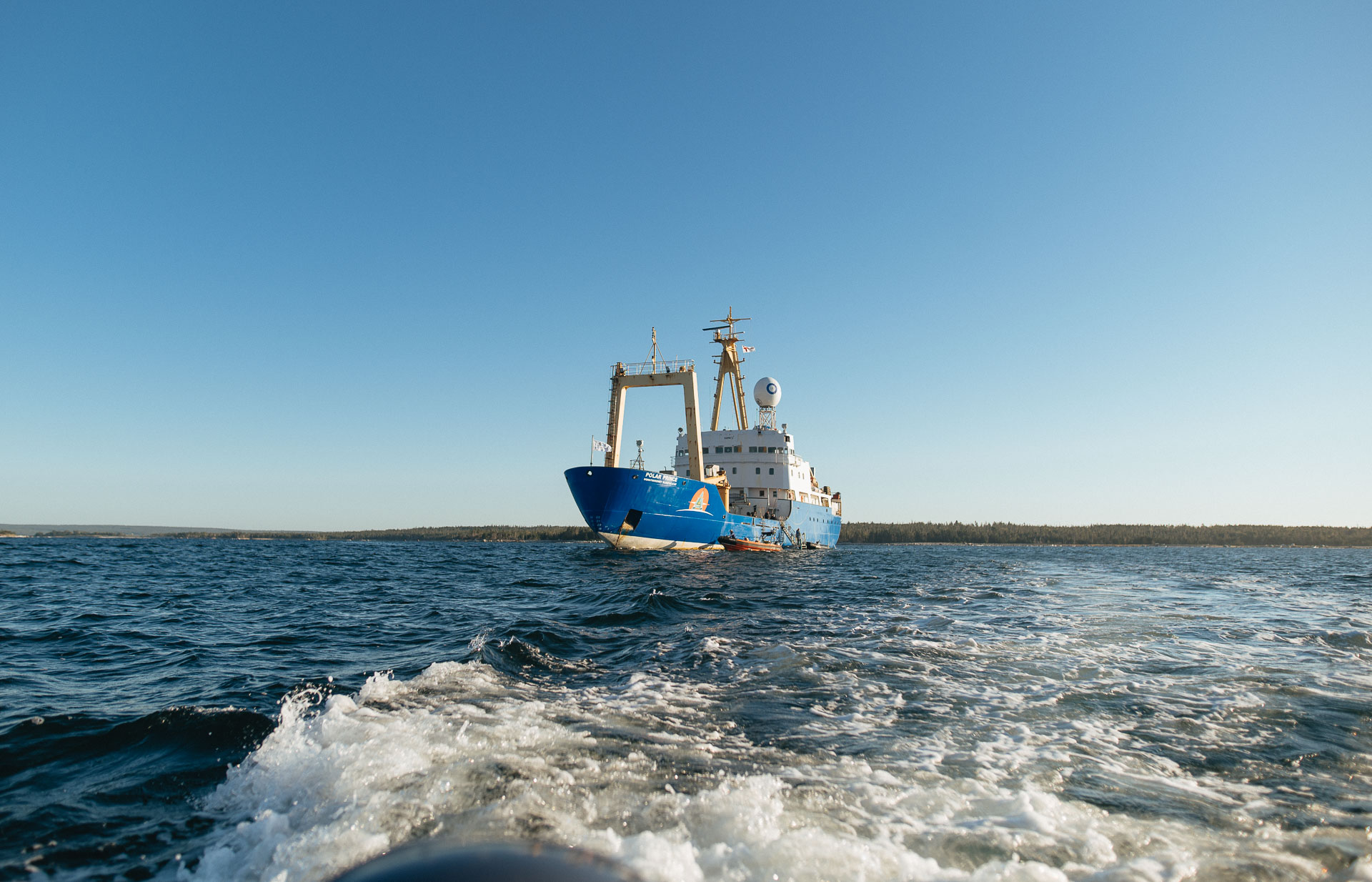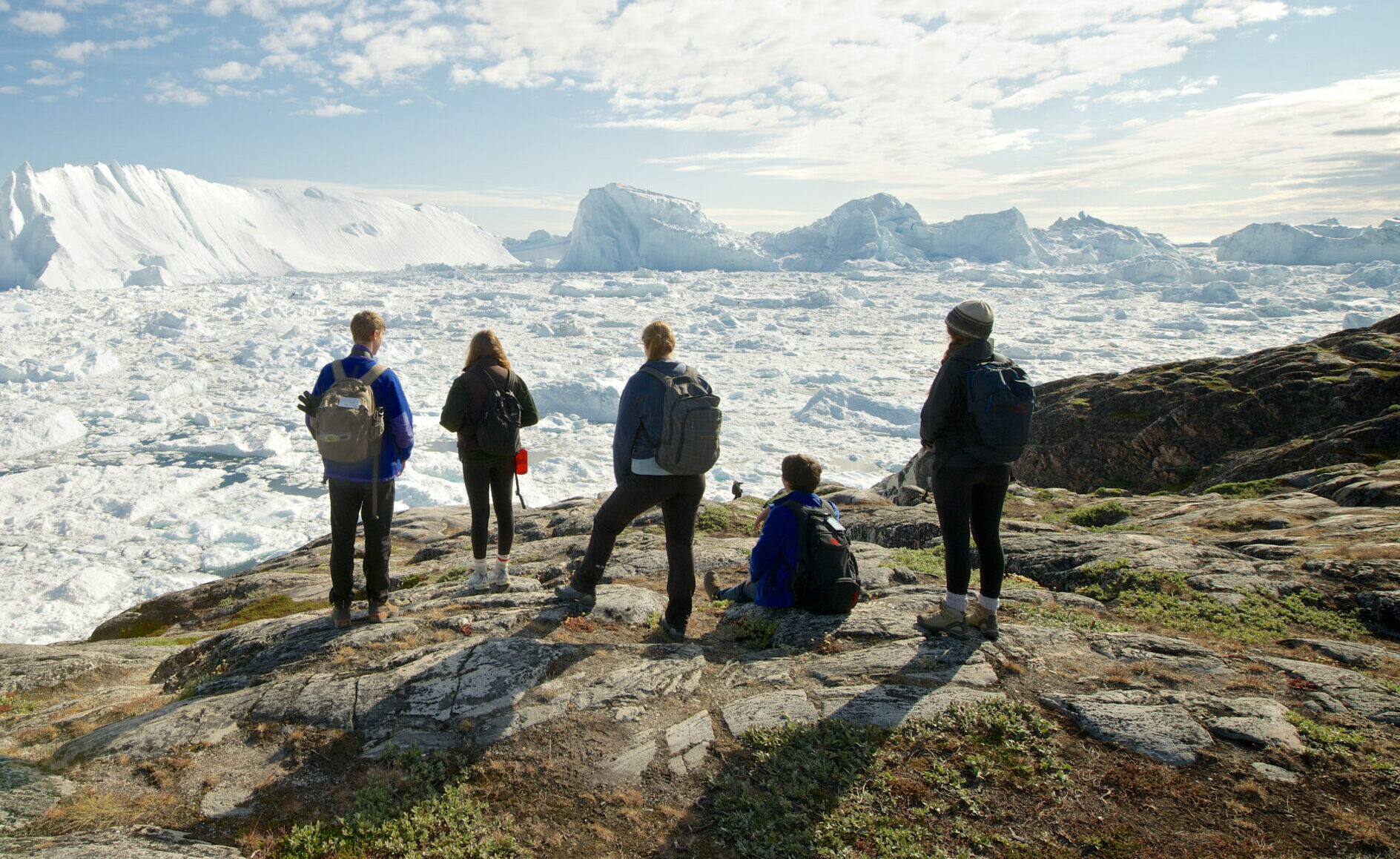The Innu Nation Uinipekᵁ Ocean Expedition: Leg 1 Recap
Leg 1 of the Innu Nation Uinipekᵘ Ocean Expedition has continued in the beautiful waters of Innu Nation. Over the last few days, we have been in Atatshi-uinipekᵘ (Lake Melville), Groswater Bay, the Wunderstrands, and numerous remote islands. Together with the expedition team, we have continued to increase the knowledge and understanding of the Innu Nation coastal and marine environments alongside providing hands-on experiences in science, mariner skills, storytelling, and more for Innu youth. The second half of leg 1 continued to be filled with learning, smiles and big belly laughter.
One of the highlights of this leg was our visit to the Gannet Islands Ecological Reserve, a cluster of islands located in the Innu Nation marine zone. Seabird biologist Bill Montevecchi from Memorial University helped us visit this incredible place. Everyone on board was blown away to see such an incredible abundance of birds. The last survey of the islands was completed in 2008, and while our visit wasn’t an official survey, we estimated that there were well over 100,000 birds present on the islands which is data that Bill will be sharing back with the Canadian Wildlife Service. The most common birds we saw were Atlantic puffins, common murres, razorbills, eiders and loons. Bill shared that this is a good news story that showcases the health of the ecosystem. We have been so lucky to have Bill on board. Each day during the expedition he has been busy at work up in the ship’s bridge surveying birds with some of the youth participants.

Meanwhile, below the surface of the ocean, our dive team also encountered a rich, diverse environment teaming with life. The dive team from the Canadian Museum of Nature and the Huntsman Marine Science Centre have done several dives during Leg 1 focused on collecting seaweed and invertebrate samples to better understand the biodiversity of the Innu Nation marine zones. The lush, colourful seaweed and kelp in this area is something that the divers are going to dream about for years to come. Bill shared that this beauty below the water was not a huge surprise as life above and below the ocean surface truly thrives in tandem.
As we headed back into Atatshi-uinipekᵘ (Lake Melville) for the end of Leg 1, we made a stop at the Backway and put the Zodiacs out again for some hands-on science activities. The Department of Fisheries and Oceans is one of the major partners of this expedition working to support Innu Nation’s inshore monitoring and stewardship program. Terri Wells guided several activities for the youth including collecting water samples and using underwater cameras. Back on the ship, Michael Hannaford, Marine Planner with Innu Nation, led an ROV workshop on deck, checking out the marine region in another way.
Later that same day our science team led a hands-on identification lab using some of the specimens collected throughout the leg as part of a biodiversity survey. With scientists from the Canadian Museum of Nature, the Huntsman Marine Science Centre, and the Department of Fisheries and Oceans, participants learned about seaweed pressing, invasive species, and how to identify corals and sponges under the microscope from their spicules (the glass-like skeletons of the sponges).

Throughout the leg, the youth on board chose the different activities that they wanted to participate in each day. It was amazing to see them jumping in and trying out new things and sharing their enthusiasm with each other. Whether they were up on the bridge with Bill, water sampling with DFO, supporting the dive team, flying the drone, driving the ROV, learning how to bear guard, or something else entirely, it was with curiosity and smiles. On ships time seems to fly by so fast yet with such full days it also feels like we have been together longer than a week. We have truly become a family on board.
Participant Loreena shared a beautiful reflection about the impact of the expedition: “With Innu people, I find that when we’re facing challenges back home, one of the things we should focus on as a community, as just an Indigenous group, is trying to reduce the barriers that get us out to the land and get us out with our family. I feel like the connection part here is super important. We’re all together all the time. We’re out on the land. We’re learning together. And I think that’s my favourite part, just being with everyone, learning more, and disconnecting a little bit.”
We wrapped up Leg 1 with a beautiful sunset, lots of laughs, dancing, singing, and a sea urchin taste test on the bow. We are so excited to welcome these beautiful youth into the SOI Alumni Family. This is only the beginning of the amazing things to come.

New youth participants and community members are coming on board for Leg 2 and we can’t wait to see what will come next on the Innu Nation Uinipeku Ocean Expedition.
Watch the leg 1 recap here:





